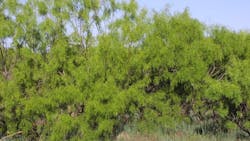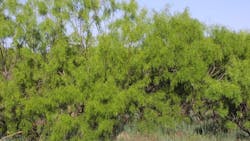Mesquite outcompetes desirable grasses for water, nutrients and sunlight. It remains green and growing while surrounding vegetation turns brown. Mesquite’s hardiness can challenge vegetation managers along utility and highway rights of way, especially as the plant transforms from low brush to trees that may reach 20 feet in height.
The primary reason mesquite is tough to control is its ability to resprout. This makes cutting, grazing or burning less effective.
Check out this Improving Mesquite Control with Streamline® case study case study to see the difference a timely application of DuPont™ Streamline® herbicide can make on mesquite control in utility right of ways. The DuPont field trial in Childress, Texas, compared two rates of Streamline® on land with heavy mesquite coverage. When applied at the maximum labeled rate, Streamline® provided exceptional control (92 percent more than two years after treatment) and, at lower rates, outperformed the standard treatment.
|
Mesquite Control |
|||
|
|
Rate |
Mesquite Control (%) |
|
|
455 |
752 |
||
|
Streamline® |
5.6 |
73 |
74 |
|
Streamline® |
11.3 |
97 |
92 |
|
Source: DuPont field trial data |
|||
To successfully control mesquite, apply Streamline® in late spring to early summer when leaves are mature and dark green.
Contact your local DuPont representative or visit landmanagement.dupont.com to learn more.

